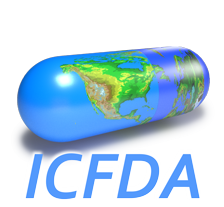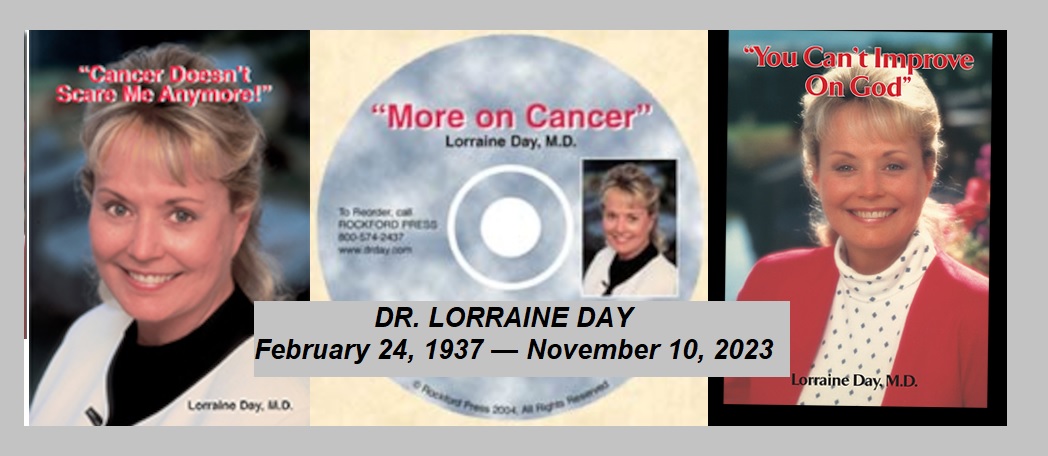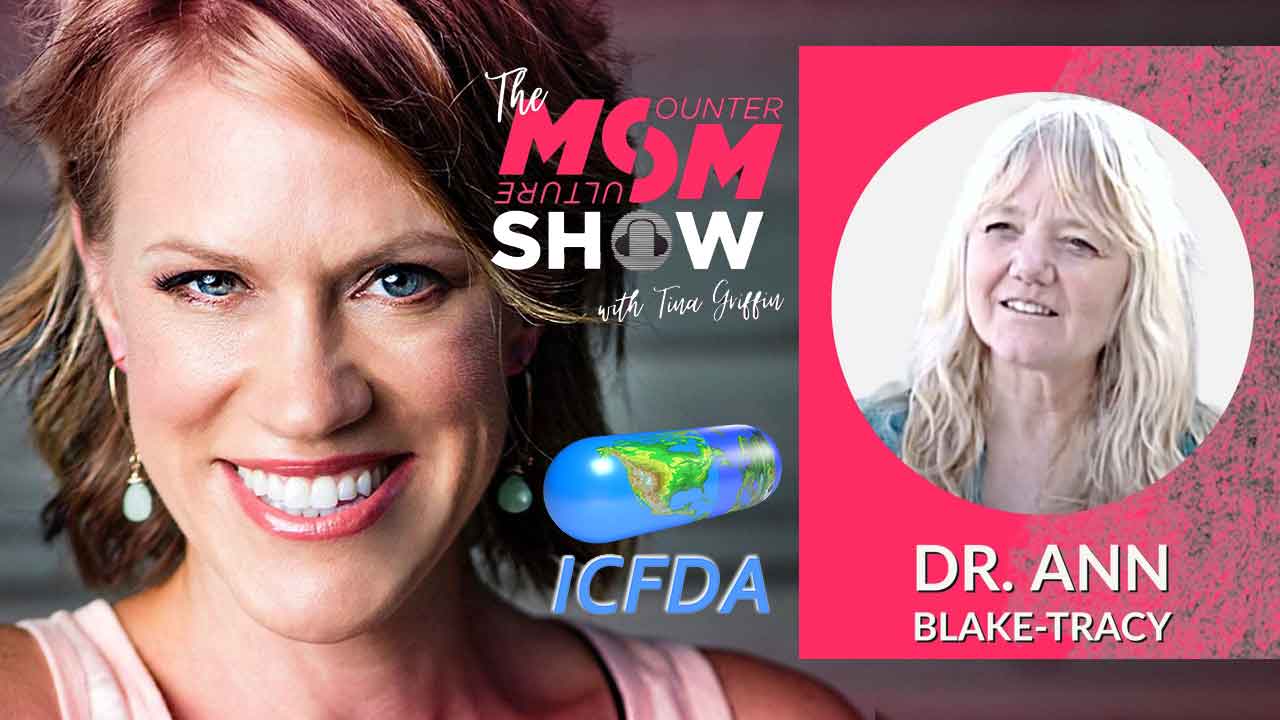It is my opinion that one of the most frightening and dangerous practices in
American medicine today is this direct to consumer advertising. Advertising
of tobacco products has been banned, yet they are allowed to advertise
prescription drugs? Where is the logic?
Clearly many who have had their lives destroyed by the SSRIs would not have
ever taken the first pill had it not been for direct to consumer ads leading
them to believe that someone coming back to Prozac would be young, slender,
and athletic, rather than old and worn out, overweight and bloated, and
barely able to move or function. Or the Paxil ad leading them to believe the
drug would help them “come into life” rather than being honest about the drug
helping them come into the “afterlife” thanks to the very deadly effects of
Paxil.
It is my opinion that these drug company ads are the most perfect example of
the biblical prophesy about our day when they would call evil “good” and good
“evil.”
Ann Blake-Tracy, Executive Director,
International Coalition for Drug Awareness
www.drugawareness.org
___________________________________
http://www.washingtonpost.com/wp-dyn/articles/A56322-2000May12.html
With TV Spots, Drug Firms Aim At Patients’ Role
By Susan Okie
Washington Post Staff Writer
Monday, May 22, 2000 ; A01
In an animated television commercial for the anti-anxiety drug Buspar, a
woman sweeps her list of woes–worry, sleeplessness, muscle aches,
irritability–into the trash.
In one for Prilosec, a long-acting heartburn remedy, smiling people play or
recline on the faces of giant clocks.
And in a commercial for the antihistamine Zyrtec, a man with “indoor and
outdoor allergies” is sniffle-free as he flies a toy plane around his yard.
A pill can fix whatever ails you: That’s the message that makers of these
and other heavily advertised prescription drugs seem to be sending American
consumers. For years, pharmaceutical companies promoted
such medicines exclusively to doctors, since they wrote the prescriptions and
thus determined sales. But in the last decade, as managed care has limited
the drugs that doctors can choose from health plans’ formularies and as
consumers have demanded more say in their treatment, some companies have
dramatically shifted their marketing strategy.
Now, for a growing number of drugs, the patient is the target.
Direct-to-consumer advertising for prescription medicines increased nearly
20-fold during the 1990s. Last year, U.S. drug companies spent almost
$1.9 billion urging consumers to try prescription remedies for conditions
ranging from allergies and baldness to diabetes and high cholesterol. Of that
total, $1.1 billion was spent on television commercials, the fastest-growing
medium for advertising prescription medicines. The goal is to send patients
to the doctor demanding a brand-name drug, even if they have to pay for it
themselves.
“There are a lot of forces now that are basically pushing the decision-making
back to the consumer,” said Jim Daly, general manager for respiratory and
anti-infective marketing at Glaxo Wellcome, the top-spending company for
consumer advertising of prescription drugs.
Sabrina Smith of Arlington is the kind of consumer these companies are
trying to reach. Smith, 32, suffers from hay fever and is allergic to her two
cats. She has tried five different prescription medicines in the last two
years in response to TV commercials, with little success.
Drug ads “really grab my attention,” she said. “Why is it that I trust them
so much more than any other ad? . . . My allergies are so bad that I just get
desperate.” When a commercial mentioned a drug’s side effects, she added, “I
used to not even hear them, because I’d think, ‘Oh my God, here’s something
else that might help me.’ ”
Sales figures for heavily promoted drugs suggest that the strategy works.
U.S. sales for the antihistamine Claritin, No. 1 in direct consumer
advertising, were $2.3 billion last year; Prilosec, one of the top five, had
$3.8 billion in sales. But whether such advertising is good for patients–and
for the U.S. health care system–are hotly debated questions.
Advocates say the ads alert people to new treatments and open up discussion
of once-forbidden topics such as impotence or depression. Critics charge that
the ads play down medicines’ risks, contribute to steeply rising prescription
drug costs and encourage Americans to believe that pills–rather than
lifestyle changes or other nondrug interventions–are invariably the
treatment of choice.
“The aim is to sell a product,” said Barbara Mintzes, a public health
researcher at the University of British Columbia’s Centre for Health Services
and Policy Research. She noted that the United States and
New Zealand are the only countries that allow direct-to-consumer advertising
of prescription drugs, although Canada is considering such a policy. “It
doesn’t give [consumers] an overview of what’s available and whether it’s the
most appropriate treatment or the best value for money,” Mintzes said.
Although most prescription drug advertising still focuses on doctors, the
number of medicines being promoted to patients is growing. Many drugs
marketed in this way are for problems that are more bothersome than
dangerous: allergy symptoms, baldness, acne, migraine headaches. But
medicines for serious, chronic illnesses such as diabetes and asthma are
promoted, as well.
“Even on TV, we’re talking about over 40 drugs” advertised to consumers, said
Nancy M. Ostrove, chief of the division of drug
marketing, advertising and communications at the Food and Drug
Administration’s Center for Drug Evaluation and Research. “It’s
easily over 100 if you count print [advertising] too.”
The boom in television ads began in August 1997, after the FDA issued a
“guidance” that made it easier for companies to craft commercials that
complied with agency regulations. Previously, every broadcast advertisement
linking a drug with a condition had to state the medicine’s potential side
effects and tell consumers how to get a copy of the product labeling. The new
guidance allowed TV and radio ads to mention only major risks and to list
four sources–“your doctor,” a toll-free number, a Web site and a concurrent
print ad–for people who wanted additional information.
In the three years since the guidance, television ads for drugs have
proliferated–and quite a few have run afoul of the FDA for lack of balance,
incomplete information or misleading claims.
Drug commercials need not be preapproved by the agency. Companies must send a
copy to the FDA whenever a new TV ad (or any other prescription drug ad)
debuts. Ostrove said her staff of 15 reviewers was responsible for screening
about 30,000 pieces of promotional material last year, including more than
100 television commercials. Even though TV ads for drugs are a top priority,
misleading ads have sometimes reached millions of viewers before FDA staffers
saw them and picked up violations.
According to an FDA official, 50 prescription drugs have been promoted on TV
or radio since August 1997. In the same period, the agency has sent 23
regulatory letters to drug companies for advertisements that violated FDA
rules. That total doesn’t include violations found in so-called reminder ads,
which the agency counts separately. (Reminder ads mention a drug’s name but
must not specify what it’s for, and they are not required to list its side
effects.)
So far this year, two companies have received letters about TV commercials
that violated FDA regulations. The offending ads
were for the heartburn remedy Prevacid and the anti-allergy nasal spray
Flonase.
“Sometimes [companies] will argue with us, but generally they pull the ads,”
Ostrove said. “In some cases we have asked for
remedial advertisements.”
Daly of Glaxo Wellcome, which makes Flonase, said the FDA’s position on
direct-to-consumer advertising is still evolving and often difficult for
companies to predict. “It is far from black and white, in terms of what
claims and what fair balance the agency feels comfortable with,” he said.
Every prescription drug ad contains some variation of the phrase “ask your
doctor”–and physicians say that’s just what patients are doing. As a result,
direct-to-consumer advertising is shifting the agenda of many doctor-patient
encounters and influencing treatment decisions.
“One-fifth or one-sixth of the patients that I see either come in with an
advertisement that they’re holding or mention something that they’ve seen,”
said Michael S. Wilkes, a professor of medicine at the
University of California at Los Angeles who has published studies on the
impact of consumer advertising.
About 75 percent to 80 percent of the time, a patient who asks for a
specific drug receives it, according to several surveys. “The physician
doesn’t want to disappoint patients,” Wilkes said. “It takes time to answer,
to argue or to reeducate somebody. [Doctors] don’t want to be perceived as
cheap or cutting corners.”
A selection of Washington area doctors said drug advertisements sometimes
prompt patients to seek treatment for serious problems that they might
otherwise have ignored.
“If they come in and say, ‘I’m anxious or depressed and I’d like to consider
medication,’ it just makes talking about it so much easier,” said Bryan J.
Arling, who practices internal medicine in the District.
But doctors also complained that responding to requests for specific drugs
takes up time that might be better used discussing lifestyle changes or other
issues. “[Patients] all say, ‘Well, it [the drug] is paid for by my insurance
plan,’ ” said Ronald E. Greger, a family physician in Gaithersburg. “It’s
going to take the doctor time to explain why an alternative might be better.
. . . If I’m going to get paid $38 or $48 for the visit, I can just give you
the [drug] that you really wanted in two minutes and you’re going to leave
happy.”
The explosion in consumer advertising is contributing to rising health care
costs. Americans spent more than $100 billion on prescription medicines last
year, about 10 cents in every health care dollar. The average cost of a
prescription rose 11.6 percent last year–partly because of increasing
research and development costs, but also because of hefty promotion budgets.
Drugs advertised to consumers tend to be among the newest and most expensive
on the market, and ads may woo patients away from cheaper generic drugs.
There’s indirect evidence that consumer advertising also increases visits to
the doctor and medical testing. For example, in the year after an advertising
campaign for Fosamax, an osteoporosis treatment, patient visits for
osteoporosis evaluations almost doubled, according to the market research
firm IMS Health Inc. In the first nine months of 1998, according to a survey
by Scott-Levin, a drug-marketing research firm, total patient visits rose by
only 2 percent compared with the same period in 1997, but visits for hair
loss doubled and visits for smoking cessation more than tripled. Drugs for
baldness and to help smokers quit were being heavily promoted at the time.
Daly of Glaxo Wellcome said consumer advertising motivates people to seek
help for problems–such as migraine, allergies or irritable bowel
syndrome–that many doctors tend to minimize and treat in a limited way. “I
think it’s an empowering message . . . that the condition you have is real,
it’s not psychosomatic, it’s not in your head, there’s a biological basis and
there are effective treatments available,” he said.
Smith, the Arlington woman, recalled one occasion when a drug ad provoked a
valuable exchange with her doctor. She saw a commercial for Zyban, an
antidepressant marketed for people who want to quit
smoking.
Smith, who was a longtime smoker, asked her doctor at Kaiser Permanente, an
HMO, about the drug. “He said, ‘Well, that’s a lot
of money, and it usually doesn’t work,’ ” she recalled. Instead, the doctor
suggested she try a nicotine patch and a smoking-cessation program at a local
hospital. She did–and she hasn’t smoked since.
Cathy Alphin of Springfield, another Kaiser Permanente member, believes drug
advertisements have made her a more knowledgeable patient. Alphin said seeing
such ads prompted her to ask her doctor about alternative treatments for her
chronic sinusitis.
Drug ads directed her to pharmaceutical company Web sites, which she learned
to check regularly for new treatments and rebate offers. From there, she
began to surf other health sites to address her medical questions. “Now I go
out and look on the Web,” she said. “I’m responsible to be an informed
consumer.”
© 2000 The Washington Post Company



